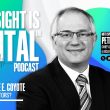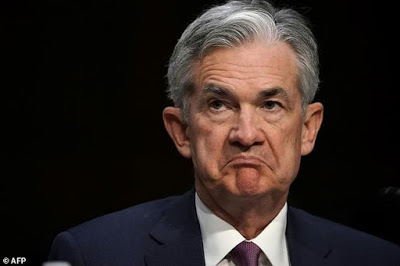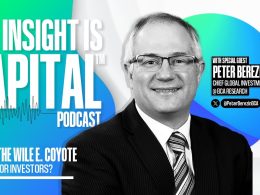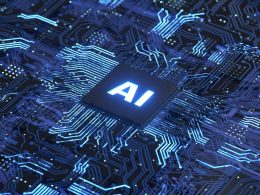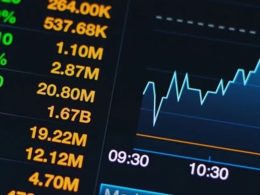by Hubert Marleau, Market Economist, Palos Management
August 22, 2025
Jerome H. Powell said 4 big things in his much-anticipated final speech as Chair of the Federal Reserve Bank, at the annual symposium hosted by the Reserve Bank of Kansas City in Jackson Hole:
- “Fed officials will make their rate decisions based solely on their assessment of the data and its implications for economic outlook and balance of risk: We will never deviate from that approach.”
- “The balance of risk appears to be shifting. With boring costs weighing on the economy, the labour market softening and inflation risk contained, the shifting balance of risk may warrant adjusting our policy stance. The recent slowdown in monthly job growth is questioning whether it is a pullback in demand from companies or a reduction in the supply of workers, resulting in a curious balance. The downside risks to employment are rising.”
- “Inflation was still too high but a reasonable base case is that the effects of tariffs will be relatively short lived - a one-time shift in the price level. Of course, ‘one time’ does not mean ‘all at once.’ It will continue to take time for tariff increases to work their way through supply chains and distribution networks.”
- “The Fed has a ‘challenging situation’ and must proceed carefully, aiming for a ‘neutral setting’ that neither revs up the economy nor slows it down.”
In the words of Nick Timiraos, the Fed’s whisperer, Powell opened the door for the central bank to cut rates as soon as its next meeting on September 17-18.
What Took Place in the Week ended August 22?
On Monday, stocks struggled for direction ahead of Powell’s Friday Speech at Jackson Hole, ending the day mostly flat. The S&P 500 decreased 0.01% to 6449.
On Tuesday, the summer calm in the stock markets cracked as questions about the future of the AI boom were revisited by several market strategists including OpenAI CEO Sam Altman, generating a selloff in megacap tech companies. The S&P 500 fell 0.6% to 6411, underscoring the S&P 500’s narrow reliance on them: the 8 companies valued at more than $1.0 trillion lost a combined $385 billion on the ensuing market capitalization.
The performance of stocks was mixed on Wednesday, with the S&P 500 dropping for a fourth consecutive day by 0.2% to 6396. The Federal Reserve’s most recent minutes revealed broad concerns about near term tariff-driven inflation and the risk of higher prices becoming entrenched because inflation has been above the Fed’s target for a long time.
The S&P 500 notched its fifth consecutive decline on Thursday, losing 0.4% by the closing bell, ending at 6370. Walmart, Amazon and T.J.Maxx failed to meet expectations, admitting that they had held back on the impact of tariffs in order to win shoppers on price to scoop up market share from less fortunate rivals. Walmart said “costs were increasing by the week.” These guys have managed to keep their in-store inflation rate below the national rate; but will they be able to keep this up much longer? Cleveland Fed President Beth Hammack told Yahoo Finance that based on current economic data, she did not see a case for reducing interest rates at the moment.
On Friday, Jerome Powell sent the strongest signal yet that cuts in the policy rate are coming. Former St. Louis Fed Resident James Bullard said that a September interest-rate cut was now a “done deal”, thinking that the Fed could lower them by as much as 100 bps at a slow pace, with an eye on the data. The dollar fell, gold and bitcoin prices rose, and bond prices surged, leaving no other choice for traders to push stocks much higher. The S&P 500 jumped 1.5% to finish the week at 6465, very close to its all time high.
The Near-Term Stock Market Outlook:
Last week I wrote: “Stock markets have climbed a wall of worry about inflation, growth, and valuations, but not about productivity and earnings, stemming from the application of AI across the economy and out-of-favoured sectors like healthcare, energy, utilities and staples, whose valuations have not kept up with their sales and profit growth. Although BigTech seems to be taking a back seat to other sectors, I’m keeping my cautionary bullish stance that the S&P 500 will soon rise to 6600, a number that I predicted at the end of last year. I’m even tempted to raise my S&P 500 outlook to 7000, because the odds are much better that we shall see 7000 than 6200, thanks to the outperformance and broadening of non-tech sectors. This set up is pretty good for a melt-up to 7000 for several reasons: impending rate cuts, low oil prices, rising money supply, solid earnings, and favourable corporate taxes. Above all, the AI revolution is already underway, as forward-thinking companies in sectors across the economy are harnessing it to expand profit margins and drive revenue, which could go a long way to outweighing extra costs that will come from import levies. I’m aware that the market is not pricing in the risk of potential economic damage related to the trade war, but stagflation is a rare occurrence without elevated crude oil prices, which have fallen more than 15% since the beginning of the year to $63 a barrel. Plus, despite all the negative talk about the dollar by doomsayers, private foreign accounts are pouring big money into US Treasuries and US equities: $1.538 trillion over the past 12 months.”
Interestingly, prices are rising, the job market is cooling, yet business is just doing fine. According to FactSet, companies in the S&P 500 have handily beaten earnings expectations, as reported profit has risen around 12% in Q2 from a year earlier versus analysts’ 5% prediction, marking one of the greatest frequency of earnings beats on record. Remarkably, the word “recession” plummeted 84% during warnings calls, collaborating with the Atlanta Fed’s NowCasting Model, which is presently tracking real growth of 2.5% for Q3. Moreover, preliminary readings on services and manufacturing activity in the U.S. produced by the S&P showed that growth is indeed running at a respectable rate even though the rise in employment is stalling, thereby suggesting that productivity is still rising; it rose 2.5% in Q2.
Thus I’m still of the opinion that we shall see 6600 on the S&P 500, even though the tech sector is getting beaten up, not because we are in a dot-com bubble all over again, but because investors are rotating into the more cyclical sectors, which usually love inflation combined with growth and lower interest rates. While I have unloaded my own positions where froth was evident, like Palantir, Credo Technology and others that have exceptionally high valuation metrics, in favour of health care, materials, energy and consumer discretionary, I have, however, kept my positions in the "Magnificent Seven,” with the exception of Tesla Inc. for 2 reasons. First, they are very productive as long-term investments because their PEG ratios (P/E multiples/growth) are not out of whack yet. Second, the policymakers may exercise the so-called “Fed Put” at a time when the economic situation does not warrant an easing of its monetary policy, and by ricochet cause the S&P 500 to melt up to 7000.
P.S. Morgan Stanley estimates that S&P 5000 companies could accrue annual net benefits of $920 billion from AI, potentially boosting nonfinancial operating profit margins by 6 percentage points. This could be worth $13 trillion to $16 trillion in stock value for the S&P 500, implying an increase of 22% to 27%.
Copyright © Palos Management

